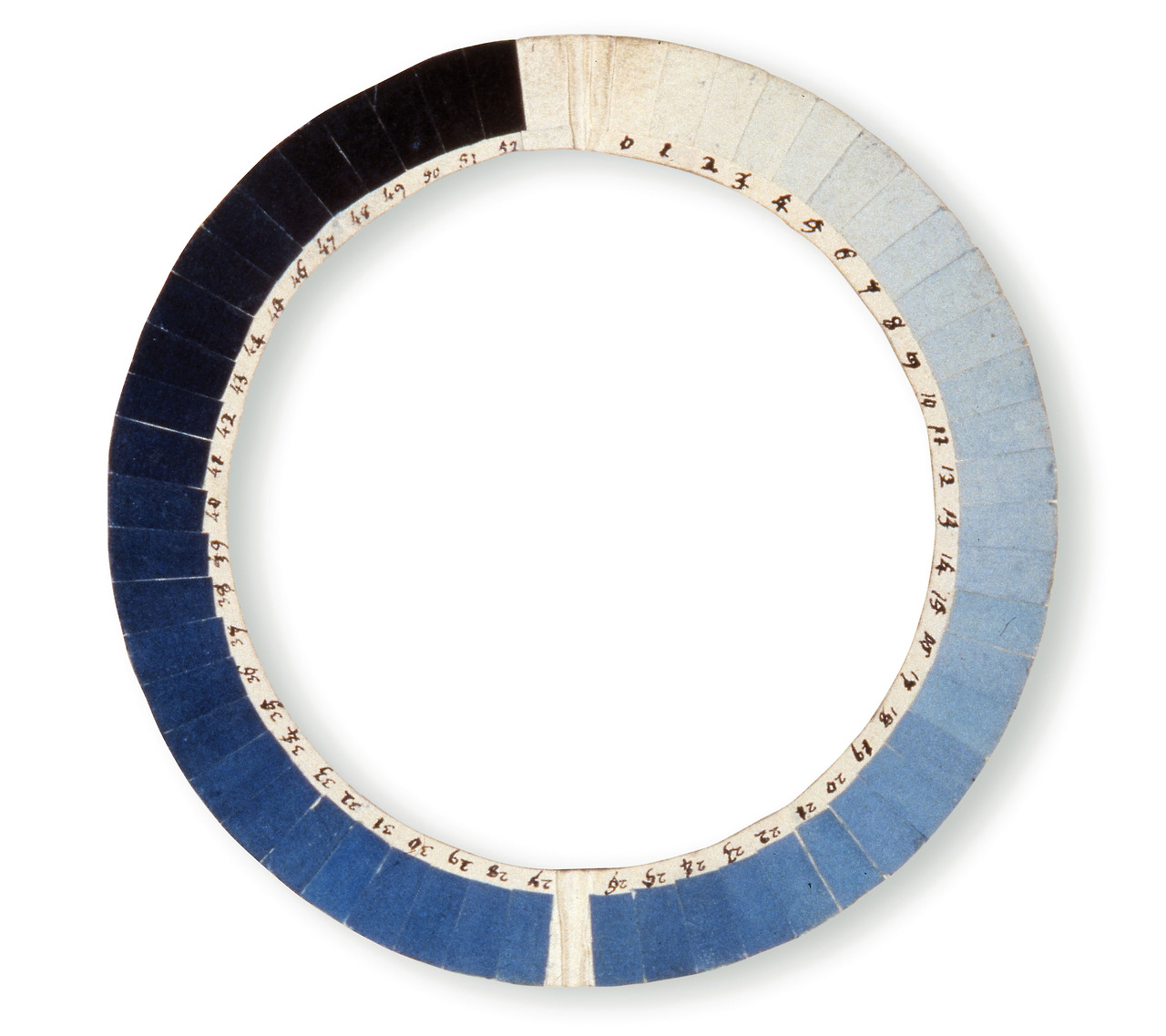This 18th century instrument, designed to measure the blueness of the sky, is called a Cyanometer. The simple device was invented in 1789 by Swiss physicist Horace-Bénédict de Saussure and German naturalist Alexander von Humboldt who used the circular array of 53 shaded sections in experiments above the skies over Geneva, Chamonix and Mont Blanc.
The Cyanometer helped lead to a successful conclusion that the blueness of the sky is a measure of transparency caused by the amount of water vapor in the atmosphere.
